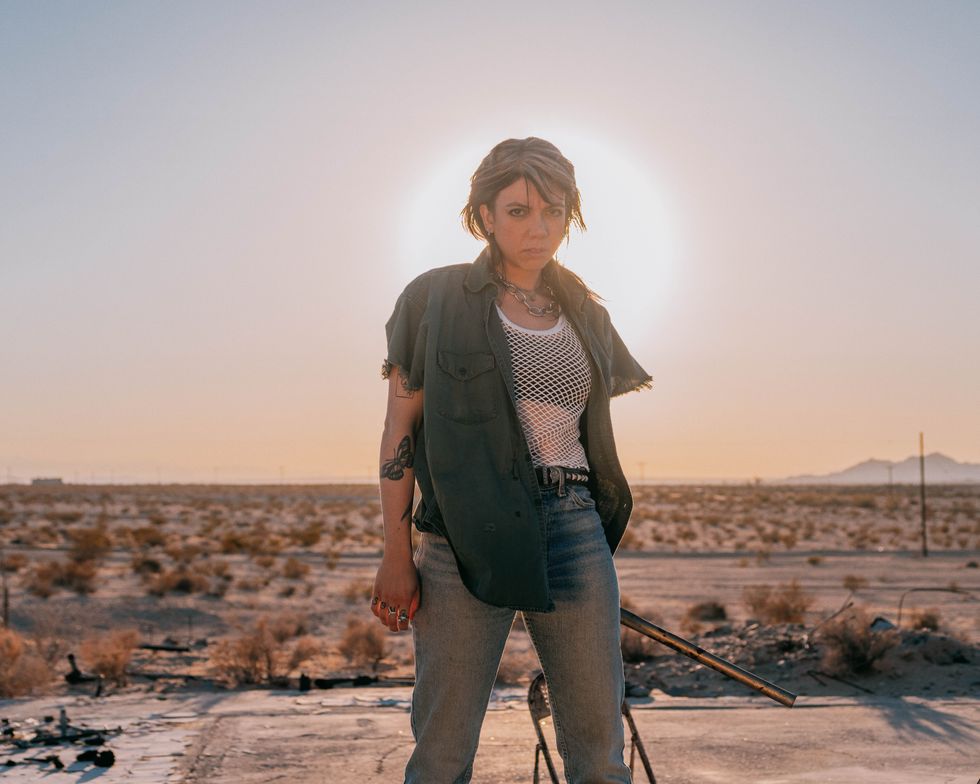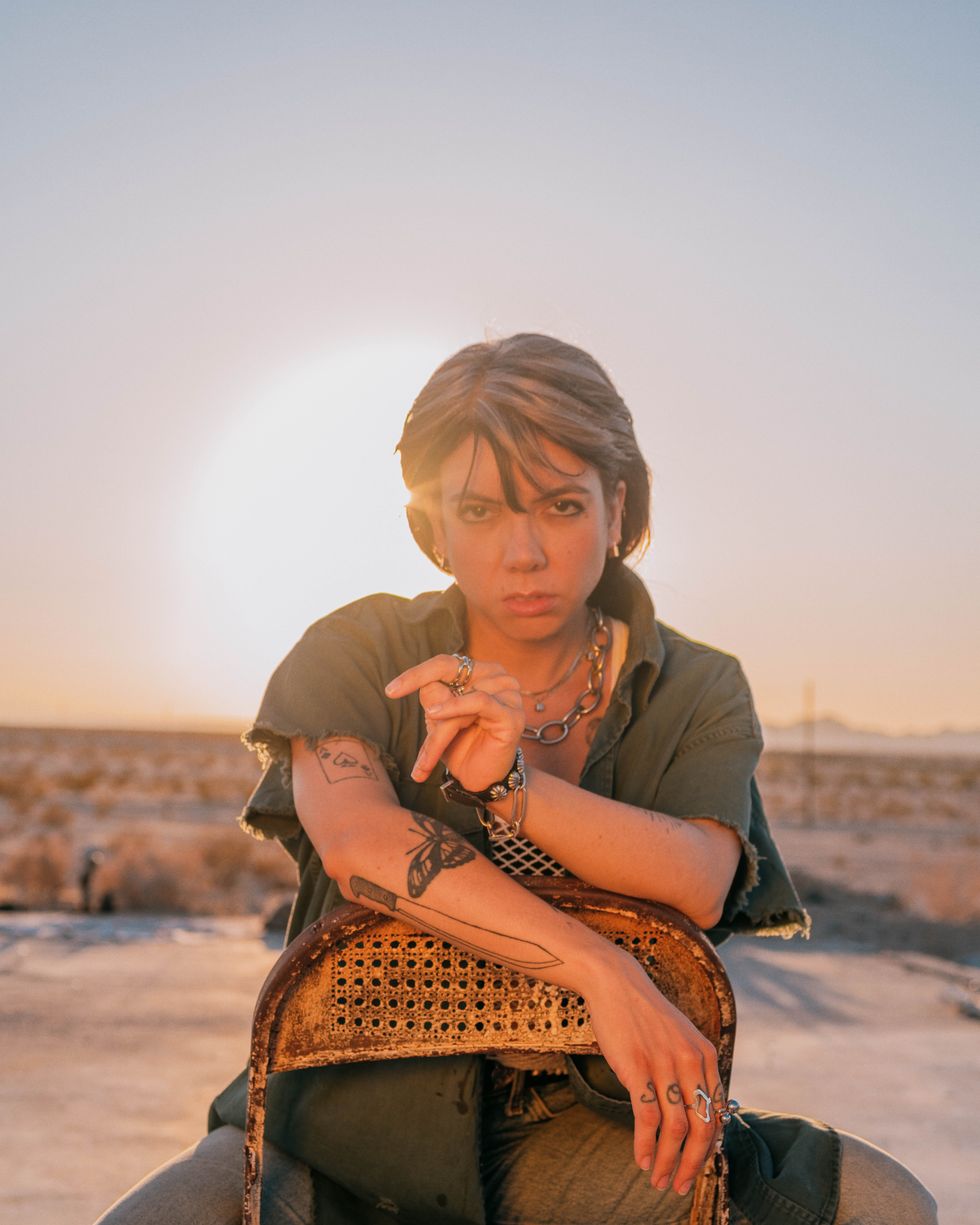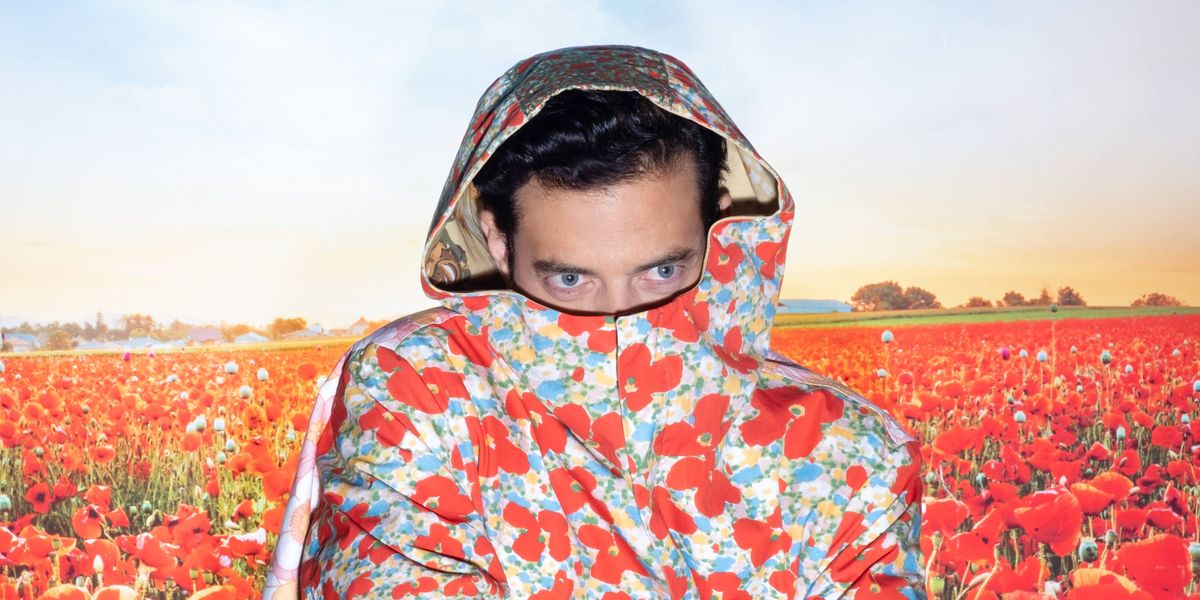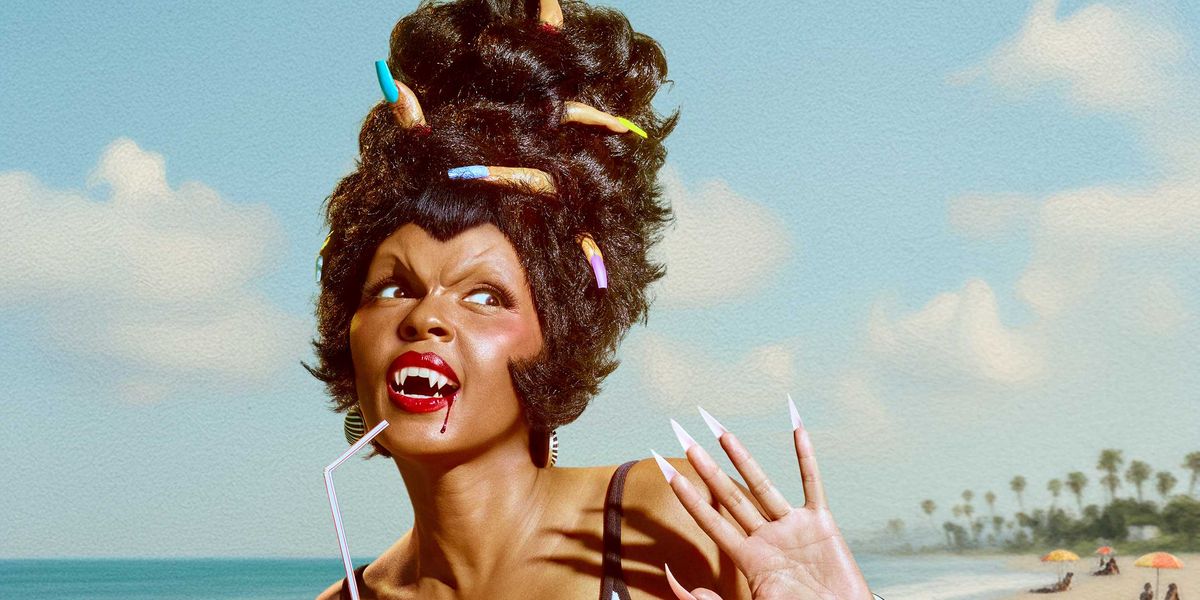
Hurray for the Riff Raff Ressurects Past Lives
By Tobias Hess
Feb 22, 2024Alynda Segarra (Hurray for the Riff Raff) is not just a musician but a historian. A finely attuned writer with musical roots in the American folk tradition, Segarra has made a name by documenting the stories of people and places that are often unseen. Born in the Bronx, Segarra packed up at just 17 to hop freight trains and seek out “community, safety, love,” they tell PAPER. Joined by a ragtag crew of fellow queers, anarchists and general outcasts, the “defining period in [their] life” set them on a trajectory of searching: for truth, for a firmly rooted sense of justice and for expression. Finally settling down in New Orleans, it was there that Segarra found their people and a deeper connection to music, learning to play and write songs in a city where music is more than just a pastime, but a language, a tool, a way of life.
Throughout their multi-record career, they honed in on a style and craft that has positioned them as one of our great American bards, telling the stories of undocumented immigrants, queer folks and addicts. Their new record, The Past Is Still Alive (out Feb 23) is a continuation and expansion of that project; both an act of memoir and, as they tell me, “of history.” They were inspired in part by It Was Vulgar and It Was Beautiful by Jack Lowery, which details the story of Gran Fury, an art collective that formed in the ‘80s out of ACT UP (AIDS Coalition to Unleash Power). Lowery’s telling of their story, Segarra tells me, showed them something profound about the power of art and the collective.
“Art is really powerful and really valuable and working together is valuable,” they tell me. And the voices of the individuals who make up our shared world are also valuable. Inspired by Lowery’s work of oral history, Segarra’s album became its own work of documentation, telling the story of those they knew and loved: the story of those suffering from addiction, of those left behind by our crumbling social structures and of those that are there to pick up the pieces: people in the Lower East side, in San Francisco, in New Orleans and rolling along on freight trains.
A few short weeks before the release of The Past Is Still Alive, Segarra spoke to PAPER from their New Orleans home, telling us about their landmark album and how their storied past is living with them today.
How are you feeling about The Past Still Alive coming out soon? Where's your head at?
I'm in a "let go and trust fall" sort of place, which feels really good. With my last record, we were coming out of lockdown and it had been five years since my prior record so it was really scary and nerve-racking. This rollout has a much more grounded feeling. I feel like this record is true to me and I hope people love it. I know I'm supposed to be making it.
I definitely feel that groundedness in the writing. I was listening to it and I was thinking a lot about place. The record feels like a tour through America. I know that the record’s geographic expansiveness mirrors your own biography. How would you describe the role of place in your writing?
Place is so wrapped up with memory for me. What do you do with all these experiences and these people and these places that are fleeting and are no longer with you? How do you carry them? What is a burden? At first, exploring the United States was my way of trying to find community, safety and love. Now I'm at this place in my life where I feel like, “Wow, I've been able to receive a lot of these things I was searching for: chosen family, support and community.” Now it feels like I'm on my own map and I'm sharing what I've witnessed.
You hopped freight trains as a young person, so that's a very literal search, right? How did that experience informed your relationship to place?
It was a defining period of my life. I think I went through a period where I was like, “Well, that's what I did when I was younger and now I'm older and that's over.” And now I've become a lot more comfortable with the idea that there are just these time periods that really shape us and become a part of our DNA. I think it also shows how desperate I was and how willing I was to put it all on the line. To be like, "This is how alienated I feel. This is how scared and alone I feel. I'm willing to do this thing that's pretty extreme.” [Riding trains] created a community and a culture that made a lot more sense than the "real world," which I was really failing at. I was failing at school and failing at this fast track of success I was supposed to be on while growing up in New York City. I was just like, “I'm not built for this. I'm gonna fail at this, so I'm gonna try this other crazy shit, because these are the people that I'm gonna get more actual love or understanding from.”

How would you describe the culture and community of the people you traveled with on freight trains?
There's a lot of different subcultures within it. At the time, I felt like I was meeting some of the pioneers of queer train riding and of the queer squatter anarchist world. And now that's a lot more a part of it: queer folks, trans folks out on the road, living off the grid. To me, that's really exciting because, when I was growing up, it could get really gnarly. There were definitely people that you ended up in situations with that were so, so sketchy.
You grew up in New York City, a place that's a huge character in the album. How has your relationship to the city changed since you moved away?
New York City will break your heart. It's constantly changing and it's such an unforgiving place, but also, the memory of the experiences I had there really stay with me. Now I understand the elders I grew up with who were talking about these times in the ‘80s or the ‘70s. I'd be hanging out in Tompkins Square Park and there would always be these old radicals, saying, “You should have been there for the riots.” Today, I'm becoming more and more one of those people. There's so much going on there now that I just don't know about, and that really excites me. Somewhere, there's a generator show. Somewhere, there's a squat party happening in an abandoned warehouse, and I'm not there. But I know it's happening. And I think that's the energy of New York that I like and keep with me.
You also spend time exploring the AIDS movement and ACT UP. Why was that important?
I read this book by Jack Lowery called It Was Vulgar and It Was Beautiful. That was one of the main inspirations for this album. That book is about the nitty gritty process of group decision-making. It was about how the [artistic] decisions [of Gran Fury, an art collective that formed out of ACT UP] had such an effect on what they were trying to accomplish [politically]. It's such an important book, because it's just saying that art is really powerful and really valuable and working together is valuable. [The book] doesn't tie things up in a bow at the end, but it says: it's worth it to try to work together, to value art. We’re in a time when I feel like art is so devalued in our society. That book reminded me that art is still important, even though we're being convinced it's not.

Your work is very political, in that it explicitly addresses themes of colonialism, injustice and queerness, but it also isn’t didactic, which is a difficult balance. How did you balance the relationship between politics and art on this album?
It feels a lot less straightforward than on my albums The Navigator or Life on Earth, where I wrote songs specifically about the journey of an undocumented person. But this album is just inherently political in that it’s a deeply raw, personal account. It was inspired by Lowery’s book in that I felt like it was really important to be a bit of a historian about these communities and these people who are seen as disposable, who are erased by history. It’s a very political act to say, “Actually, my friends that are not around anymore are super fucking important, and their legacies are important and people who suffer from addiction are important.” To really lay that down felt like a radical thing to do. It's also was a really healing thing to do.
There is this line on the Colossus of Roads that really struck me. “Say goodbye to America/ I want to see it devolve/ I can be your poster boy for the great American fall.” It made me think about how when someone addresses politics in their art you can immediately become commodified as a radical. I was curious to know what you meant with that line?
When I was signed in 2014, I got put on this track of being described as “Americana Roots,” and the narrative around me was really clean and my whole life story [became] very shiny. So [that line] was me saying: I am no longer here to give people false hope or a feeling of comfort. All the people I love are not feeling comfortable. They're feeling confusion. They're feeling fear. They're feeling bravery. They’re feeling a groundedness, as in, This is really happening. We don't know what the future holds. But we do know that things need to change very much. But we're definitely not feeling comfy. This process of an American fall: it feels chaotic, but it’s what it will take to create a different future. Sometimes I write lyrics that can give me the bravery I may not feel in the moment, but that I’m trying to take on.
We talked about you on the freight train exploring the world and ending up in New Orleans. After seeing so much of the world, how did you settle on New Orleans as home?
New Orleans was the place that welcomed me when I didn't have anything and when I really didn’t have much to offer. I started setting roots down here before I played music. It was here that I learned to play music, that I met people who encouraged me. So I wanted to stay here because this is where people liked me. It was that simple. I loved that New Orleans has its own calendar. Right now is Mardi Gras season and it's been a month of preparation for this moment. Music is really valued here; it’s a tool for mourning, for grief. Especially now, as I'm dealing with my own grief, it's been really important to be here because this is one of the few places in America where you can be open about grief and you can talk about death because it's just a part of the culture. People have parades for people when they pass here. People are very comfortable with this idea of grieving and celebrating at the same time. It’s a really beautiful, special thing.

You said this album process was about grieving after your father’s passing. How did that process make its way into the album?
It's so interesting because I wrote it all before I went into the studio. Obviously, there were some things that weren't done, but it was mostly written. Then with my dad passing so suddenly a month before I went to the studio... I was just so grateful to have this record because I think if I didn't, I would be really lost, and I would have just been knocked over by the wave of that loss. It really gave me this feeling of “Okay, there's something I'm gonna do. It's okay. I just have to make it to next month.” Then being in the studio so close to that loss made me a lot less neurotic and a lot more creative. I put a lot of trust in Brad Cook, who produced it. Him and I have worked together before and we have this really special friendship. I'm so grateful that we put in the time to have a real friendship because, if not, I would have been on my own artistically. And with him, I could trust fall.
You have fans that have followed your career since the beginning. What do you hope this record will mean for them in terms of your progression as an artist?
I hope people feel like it's been worth it to be on this journey with me, especially because I like to push myself and experiment with different sounds, themes and ideas. This is a record that kinda just snuck up on me. I wrote it really fast. There are [different] themes, but it's also just very to the bone, and very [of] my essence, so I really hope that it can serve as a container for grief for people who are grieving, that could be a loss of a relationship, or it could be a loss of a person. I think that we're all dealing with this, I hope it can be something that people put on and feel like they have a space that they can feel those things.
Photography: Tommy Kha
From Your Site Articles
Related Articles Around the Web
MORE ON PAPER
Entertainment
Rami Malek Is Certifiably Unserious
Story by Joan Summers / Photography by Adam Powell
Story by Joan Summers / Photography by Adam Powell
14 November
Music
Janelle Monáe, HalloQueen
Story by Ivan Guzman / Photography by Pol Kurucz/ Styling by Alexandra Mandelkorn/ Hair by Nikki Nelms/ Makeup by Sasha Glasser/ Nails by Juan Alvear/ Set design by Krystall Schott
Story by Ivan Guzman / Photography by Pol Kurucz/ Styling by Alexandra Mandelkorn/ Hair by Nikki Nelms/ Makeup by Sasha Glasser/ Nails by Juan Alvear/ Set design by Krystall Schott
27 October
Music
You Don’t Move Cardi B
Story by Erica Campbell / Photography by Jora Frantzis / Styling by Kollin Carter/ Hair by Tokyo Stylez/ Makeup by Erika LaPearl/ Nails by Coca Nguyen/ Set design by Allegra Peyton
Story by Erica Campbell / Photography by Jora Frantzis / Styling by Kollin Carter/ Hair by Tokyo Stylez/ Makeup by Erika LaPearl/ Nails by Coca Nguyen/ Set design by Allegra Peyton
14 October
Entertainment
Matthew McConaughey Found His Rhythm
Story by Joan Summers / Photography by Greg Swales / Styling by Angelina Cantu / Grooming by Kara Yoshimoto Bua
Story by Joan Summers / Photography by Greg Swales / Styling by Angelina Cantu / Grooming by Kara Yoshimoto Bua
30 September
Music
Demi Lovato Is No Joke
Story by Ivan Guzman / Photography by Jason Renaud / Styling by Chris Horan/ Makeup by Loftjet / Set design by Allegra Peyton
Story by Ivan Guzman / Photography by Jason Renaud / Styling by Chris Horan/ Makeup by Loftjet / Set design by Allegra Peyton
15 September




